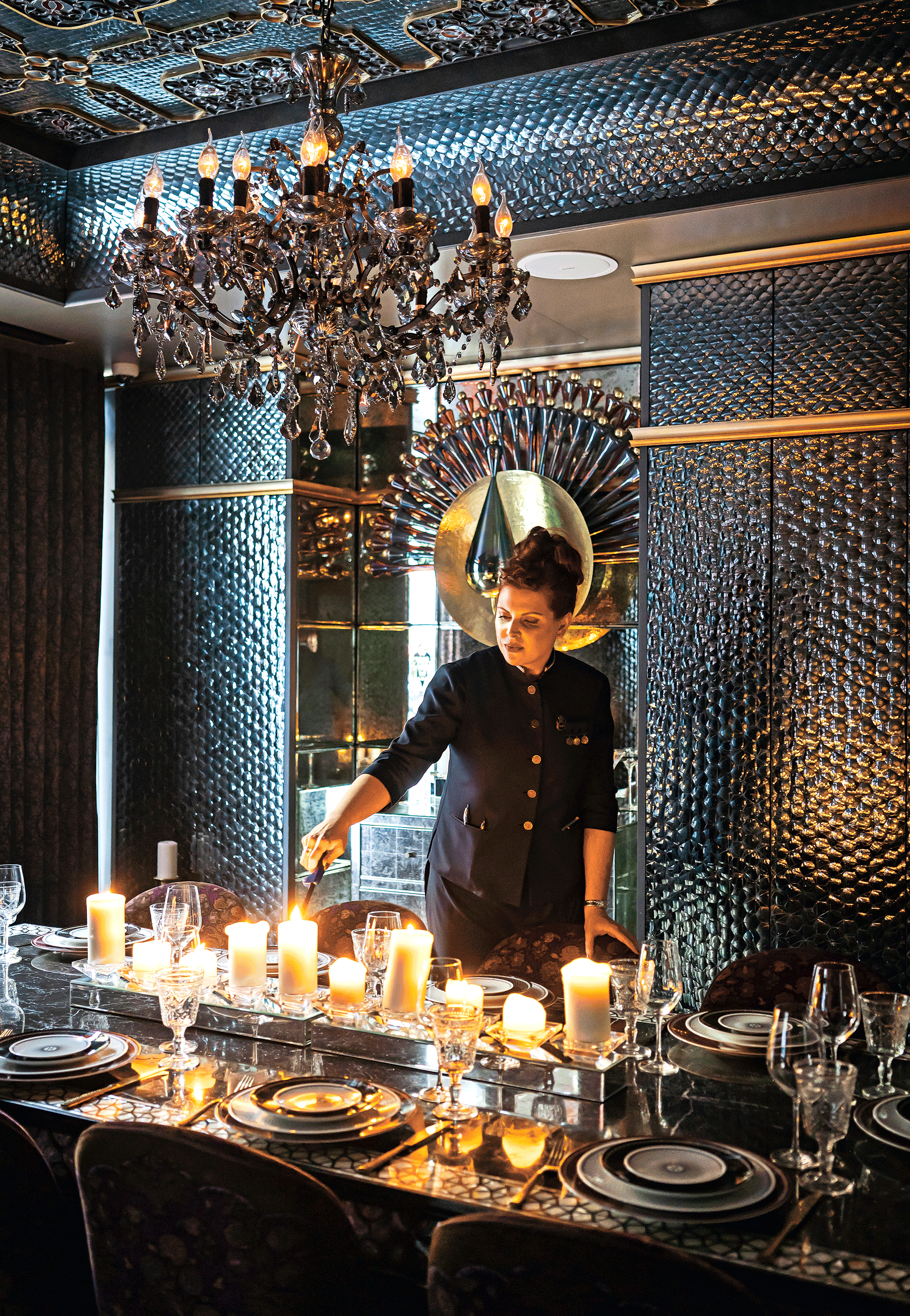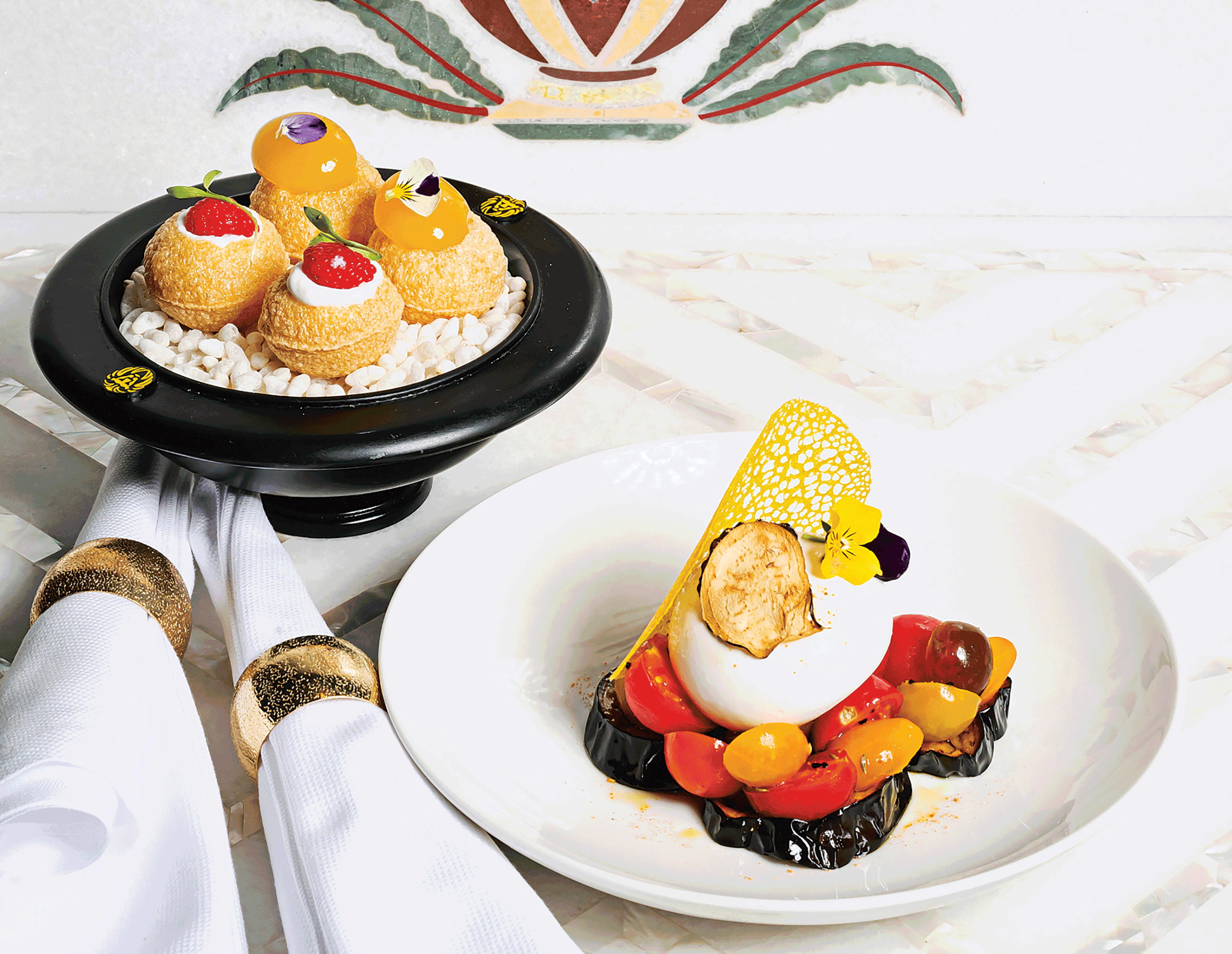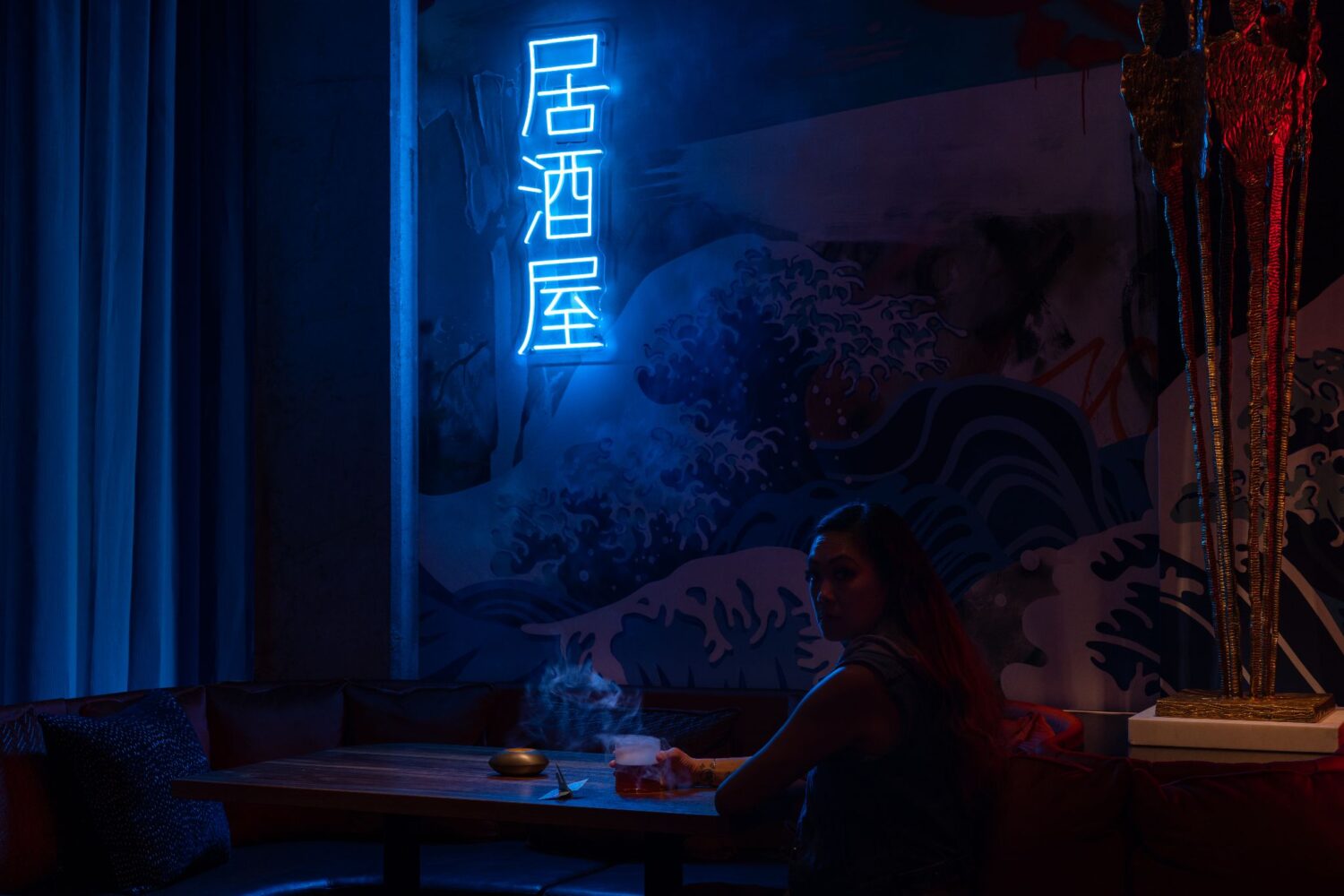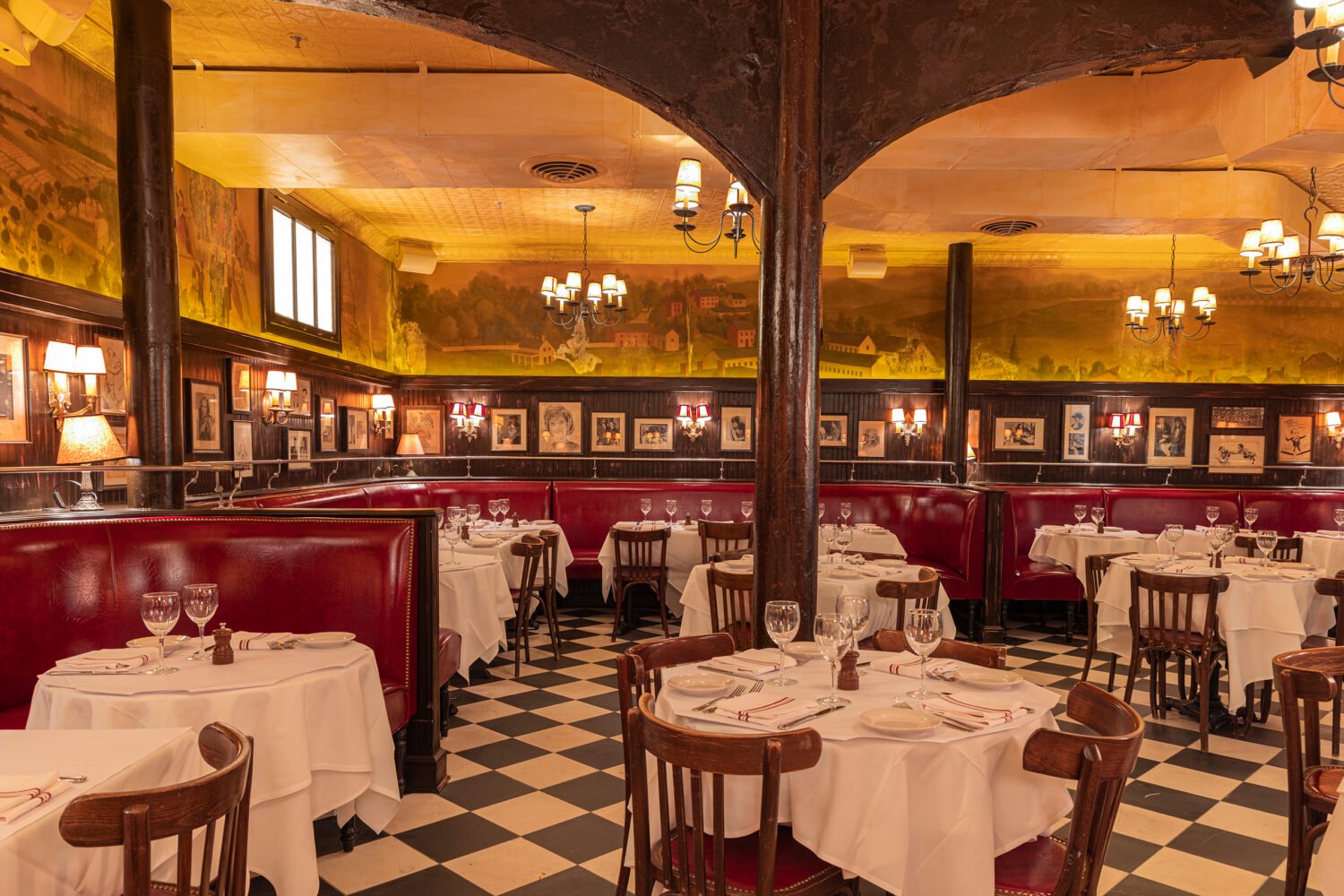Fine dining is a term that doesn’t carry much meaning anymore, except that you’ll be spending a lot of money. You can wear jeans to a $1,200 dinner at Minibar. Or you can put on your evening best and split a Châteaubriand at L’Auberge Chez François. Pick your fancy (or not-fancy) flavor.
But 20 years ago, you knew exactly what you were getting when you heard those two words. Truffles, Champagne, and caviar—not a chef’s tasting-menu riff on a back-yard burger—were the hallmarks of luxury. This is the realm where downtown DC’s three-month-old Punjab Grill dwells. There’s a pansy in your cocktail. You can add Petrossian Shassetra caviar to your tawa-griddled scallops. A filament of gold leaf floats atop a rustic, assertively spiced leg of lamb. Whether all that excites you or bores you is a matter of taste. Hey, the group of suit-clad bros in the corner knocking back bottles of Cab looked mighty pleased.
The dining room is the first US offshoot of a restaurant brand that has locations in Singapore and in the Ritz-Carltons in Abu Dhabi and New Delhi. The DC opening has been a lavish, laborious process for owner Karan Singh, an aviation executive who’s also behind the fast-casual American Tandoor in Tysons. Punjab is known for its more-is-more aesthetic, and—as at the maharaja palaces of India’s old princely states—the attention to detail is stunning: Even the bussers and food runners have meticulously tailored uniforms. The ice in your rum drink will be imprinted with a lion’s head, the place’s logo.
One of the restaurant’s main talking points is that the entire thing was built in India and shipped here, piece by piece—from the brass tiles in the bathroom to an intricately carved, 13,000-pound slab of sandstone by the bar. When you walk in the door, peek into the private room to your left. It’s Singh’s most beautiful showpiece, inlaid floor to ceiling with tiny shards of mirror that glitter against the glow of languidly dripping cathedral candles. (Want to have dinner there yourself? The privilege, which includes custom menus, Hermès china, and an optional sitar player, starts at $2,000.)

For the rest of us, there’s the regular dinner menu. Singh recruited chef Jassi Bindra, a Punjab native who last cooked in San Francisco, to oversee the kitchen, although not surprisingly, the owner offers plenty of input. (That gold leaf on the lamb was all him.) The duo diverge from many other area Indian restaurants by deep-diving into a single region’s cuisine. Punjab, in the northwest of the subcontinent, is known for its rich curries, kaleidoscopic vegetarian dishes, and glorious breads.
Some dishes, such as a tuna tartare that sings with ginger, use the cuisine as a starting point. A lush bulb of burrata goes nicely with tangy marinated tomatoes and spiced eggplant, and a red curry tastes like butter chicken by way of Thailand, thanks to kaffir-lime leaves and lemongrass. Golgappas, the famously messy street food that involves spiced water and semolina crisps, are reimagined with a filling of avocado and Granny Smith apple, then topped with spherified passionfruit juice or a fresh raspberry. Each is a firework of a bite. Still, Bindra doesn’t quite convince me that chana masala, the chickpea stew, is improved when spun in-to hummus. Or that a mixture of cremini mushrooms and ghee works as a stiff pâté.
Graze heavily in the menu’s middle section, called the Lion’s Share—it’s a combination of large and small plates that are not curries. Tiger prawns emerge juicy and flame-licked from the tandoor. They’re lovely on their own, thanks to two marinades—one with lemon, turmeric, and caraway seeds, the next with yogurt—and even better when you swipe them through a foam conjured from coconutty moilee sauce and a pepper-tomato jam. Bindra also offers three excellent takes on chicken tikka: one traditional; one marinated in cream, cheese, and nuts; and one pickled and served with pineapple chutney.

Because this is an Indian restaurant in America, there’s chicken makhni. It’s very good, but you can get very good chicken makhni at many places. Instead, I’d lean toward the jackfruit dumplings, which are fashioned into meatball-like orbs and bathed in a velvety tomato-and-cashew sauce. Our server knew better than to take away the remnants. (I’d order extra naan just for that.) Or splurge on the lamb shank—you can shred it with a spoon—in a cilantro sauce that’s as zippy as a great chimichurri.
Among the plated entrées, the standout is the top-selling Chilean sea bass, a departure from the rest of the menu in that it’s inspired by seafood-heavy Southern India. It ricochets between sweet and sour thanks to a glaze of jaggery (cane sugar) and a Malabar sauce made from kokum, the puckery Indian spice. Skip those griddled scallops, which were gritty and blandly sauced.
While the desserts are fairly forgettable—the best is the salted-caramel/paneer cheesecake—the sides and breads are not. Even if you feel as if you never want to look at another Brussels sprout (what menu doesn’t have them these days?), get Bindra’s version, cooked until they’re tender, then tossed with coconut. And even if you’re stuffed, snag an order of the eggplant stew called baingan bharta for later. Don’t skimp on the naan—in flavors such as sun-dried-tomato-and-olive—or the flaky paratha.
With its loud ’90s velvet-rope soundtrack, the vibe at Punjab Grill isn’t for everyone. (“The Nobu of Indian restaurants” is one sniff I heard.) Is it for you? I can’t say. But Bindra’s cooking? I’d venture the answer is yes.
This article appears in the June 2019 issue of Washingtonian.

















